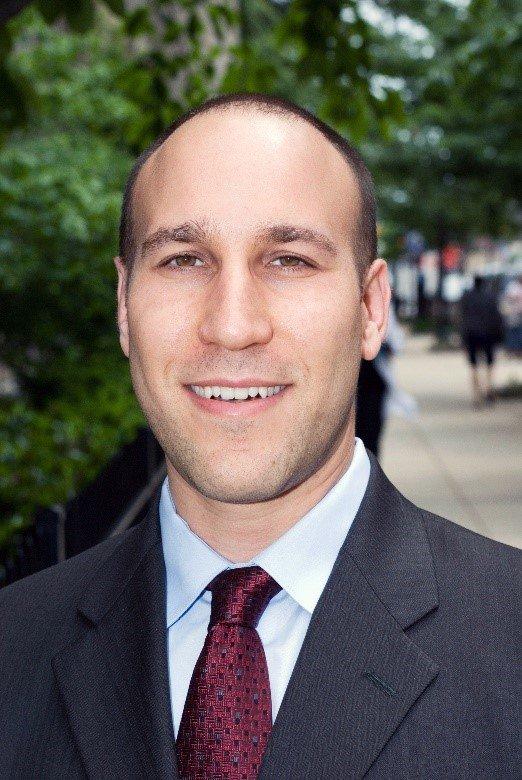Article
10 Years of Obesity: A Decade of Advancement and Challenges
Author(s):
To celebrate the 10-year anniversary of the AMA recognizing obesity as a disease, this feature leverages the perspective of key opinion leaders to examine what has changed and what has not since the AMA's declaration in June 2013.
Credit: iStock

Despite the growing prevalence over the last several decades, many among the general population are unaware the recognition of obesity as a disease is a relatively recent change.
On June 19, 2013, the American Medical Association approved resolution 420 at their annual meeting, which recognized obesity as a disease for the first time in the organization’s history.1 A move that, at the time was simultaneously controversial but still long overdue, is still causing a pronounced ripple effect in the medical community.
A Decade of Advancement
Among the most significant and apparent differences between June 2013 and June 2023 has been the explosion in pharmacologic therapies for the treatment of obesity. Although agents like phentermine had been staples, albeit underused, of obesity management for decades, the last 10 years have seen a new face welcomed into a cornerstone role in management of obesity: GLP-1 receptor agonists.
Scott Kahan, MD, MPH
Credit: Intellihealth

“There were exceedingly few effective obesity treatments in terms of medication available before then. So, you could think about obesity medications as 2 generations: the pre-2012 generation medications and then the post-2012 generation medications,” explained Scott Kahan, MD, director of the National Center for Weight and Wellness.
A class of agents held in high regard for their glycemic control benefits in people with type 2 diabetes, the first approval for an agent within the class occurred when the US Food and Drug Administration approved exenatide in April 2005.2 It would be more than a decade until the agency approved liraglutide for chronic weight management in December 2014.3 After this, the next major milestone would not come until 2021, but, given the historical significance, it would prove to be worth the wait.4
In June 2021, just 8 years after the American Medical Association recognized obesity as a disease, the FDA announced the approval of a 2.4 mg dose of semaglutide specifically indicated for use in chronic weight management.4 Then, 12 months later, data from the SURMOUNT trial presented at the American Diabetes Association 82nd annual scientific sessions affirmed GLP-1 receptor agonists and combination agents were destined to become foundational therapies in management of obesity.5
The field was given a glimpse into the future of obesity management at the American Diabetes Association 83rd annual scientific sessions at the end of June 2023. At the meeting, where just a year earlier the community applauded results of the SURMOUNT-1 trial examining tirzepatide in obesity, investigators are expected to present data related to a trio of GLP-1 receptor agonist combination agents in retatrutide, BI 456906, and orforglipron.
In addition to these trials, the community is also expected to see the results of the OASIS trial, which examines the use of oral semaglutide in the treatment of obesity, as well as data from the SURMOUNT-2 trial examining use of tirzepatide in people with type 2 diabetes and obesity.
While the advances in pharmacotherapy stand out amongst headlines, the popularity of bariatric surgery has also increased in the past decade. This advance in popularity, as well as the publicized safety and efficacy profile of bariatric surgery, spurred the American Society of Metabolic and Bariatric Surgery to release its first update to official guidance in more than 3 decades during 2022.6
This update, which was the first since 1991, recommended metabolic or bariatric surgery for those with a BMI equal to or exceeding 35 kg/m2 regardless of the presence, absence, or severity of comorbidities, urges clinicians to consider these procedures in individuals with metabolic disease and BMI of 30-34.9 kg/m2, and also offers an overview of clinical considerations for different patient populations.6
More evidence of the growing role of bariatric surgery were published in early 2023 with the release of new obesity guidance American Academy of Pediatrics. The new guidance endorses offering adolescents ages 12 years and older with obesity weight loss pharmacotherapy and endorses evaluation for metabolic and bariatric surgery among adolescents aged 13 years and older with severe obesity.7
George Eid, MD
Credit: American Society of Metabolic and Bariatric Surgery

“We know that an obese adolescent will become an obese adult. And, like every other disease, if you tackle it early on, you have much better result than if you let it go for a long period of time,” explained George Eid, MD, chair of the Bariatric and Metabolic Institute with Allegheny Health Network. “It's a reality that we cannot ignore it anymore. When this child comes to the office, it's not just about their vaccinations or about whatever complaints they have, we have to spend the time and address this disease, because it's a major one, and we need to address it early on”
Although the field has seen an explosion in advancements during the last 10 years, most, if not all, involved in the management of obesity are quick out acknowledge the progress made represents a fraction of the expected journey to adequately address the obesity epidemic.
A Decade of Challenges
“While we've made a lot of progress, there's a whole lot of progress still to be made” - Scott Kahan, MD
For all the progress made in the decade since the American Medical Association recognized as obesity as a disease, the greatest challenge in addressing the obesity epidemic has not changed: stigma.
“We have a whole long way to go. Stigma is still ingrained in our society and, in much of the Western world we still see stigma against obesity, body shape, and body size. While we've made a lot of progress, there's a whole lot of progress still to be made and it plays out in a range of areas,” Kahan explained.
What makes this problem so difficult to address is the numerous ways stigma manifests itself to delay and hamper efforts towards optimal obesity management, with stigma manifesting in 3 forms: among patients, within the culture of modern society, and even among providers.
Among patients is where this stigma may be most apparent. According to Kahan, a common theme among people with obesity is self-blaming and a desire to resist pharmacotherapy use as a result of decades of messaging purporting obesity as a disease coming as the result of laziness.
“People who have obesity, those who stand to gain health and wellness as a result of having better care and support and potentially treatments for their obesity, they frequently won't accept that,” Kahan said. “They also believe they should just be able to act better and eat better exercise more. They believe it's entirely on their own shoulders and don't believe they deserve or that it is appropriate to have help or treatments."
In addition to perpetuating the idea obesity is a disease with a root cause being a lack of effort to improve oneself, the stigma towards obesity among society protrudes through multiple different avenues, including the depiction in cable television. Although shows centered around people with overweight or obesity existed before 2013, in the last decade, multiple television shows, such as My 600 Pound Life and 1000-lb Sisters, centered around depicting struggles with obesity have emerged, but in a manner where the subjects are put on display in a manner akin to sideshows in a traveling circus.
The stigma among clinicians is less recognized among the general public, but not overlooked by obesity specialists. Encapsulating these ongoing issues among clinicians is the OBSERVE study from Eli Lilly and Company.8
Led by Kahan, key findings from the study, which surveyed healthcare providers opinions on obesity treatments, included 58% of surveyed healthcare providers indicating the belief obesity is the result of lifestyle choices and only about half agreeing obesity is a disease.
Still, the study revealed 94% acknowledge the risk for future health problems posed by obesity, but, in contrast, just 45% of respondents indicated they believed obesity was a condition warranting treatment from a healthcare provider. Another key finding from the study was 71% of respondents purported the belief insurance does not adequately cover the cost of these treatments.8
“It is what I like to call the mother of all diseases” - George Eid, MD
One of the most overlooked influences of the obesity epidemic is the way it has altered the incidence rate of clinical characteristics of a host of other conditions.
Elizabeth Selvin, PhD, MPH
Credit: Johns Hopkins Bloomberg School of Public Health

“I think it complicates so many different health conditions and, now that it is so prevalent, it's not just people with diabetes, where we're trying to address obesity, it's complicating a plethora of chronic health conditions,” said Elizabeth Selvin, PhD, MPH, co-director of the Cardiovascular Disease Epidemiology Training Program professor of Epidemiology and Medicine at the Johns Hopkins Bloomberg School of Public Health.
An example of this is a presentation by Selvin at the Metabolic Association of America’s 7th Heart in Diabetes meeting in June 2023. In her presentation, Selvintook a deep dive into the effects of obesity on type 1 diabetes. For decades, type 1 diabetes was considered a “thin person’s” disease, with a diagnosis often associated with reduced body weight. However, in recent years, rates of obesity in type 1 diabetes have begun to rival that of the general population, which has fundamentally changed diagnosis and management strategies for this patient population.
“I think type 1 diabetes is an excellent example of this. We did not think of obesity as being a big problem in terms of the management of type 1 diabetes,” Selvin remarked. “Now, people with type one diabetes have exactly the same prevalence of overweight or obesity as the general population. So, managing that in the context of type 1 diabetes complicates the treatment of the underlying disease. I think we cannot overstate how much overweight, and obesity has complicated the management of many different chronic conditions.”
A common hindrance to optimal management and uptake of guideline-directed medical therapy, regardless of disease, are issues in policy and insurance coverage. In this regard, obesity management is not an exception to the rule. For obesity specifically, one of the most significant hurdles to improving coverage is the lack of data demonstrating the feasibility of use and benefits in short-term settings.
According to Selvin, despite the understanding and acknowledgement body weight reductions in people with obesity can reduce risk over a long-term period, existing research has failed to elucidate a benefit for providers in terms of offsetting future care costs and being economically feasible in the short-term.
“From a health insurance standpoint, people don't stay in their jobs long enough, they don't stay under particular health plan long enough for those plans to for major interventions to be cost-effective. So, with an absence of a universal healthcare system, for any individual employer-based health plan it actually isn't cost-effective. So, I think that's one of the fundamental problems,” Selvin said. “If we are taking a life course approach, then you need life course coverage in order to reap those benefits, so I think that's a fundamental kind of paradox for the for the field and for or for society.”
Even in the face of all this, key opinion leaders look back on the progress made in the last 10 years and hope to use it as a foundation to continue to inspire the community to push forward into the future.
References:
- American Medical Association. Proceedings of the 2013 Annual Meeting of the House of Delegates. American Medical Association. Accessed June 23, 2023. https://www.ama-assn.org/house-delegates/annual-meeting/proceedings-2013-annual-meeting-house-delegates.
- Amylin and Lilly announce FDA approval of Byetta(TM) (exenatide) injection. Eli Lilly and Company. April 29, 2005. Accessed June 23, 2023. https://investor.lilly.com/news-releases/news-release-details/amylin-and-lilly-announce-fda-approval-byettatm-exenatide.
- Center for Drug Evaluation and Research. FDA approves Weight Management Drug. U.S. Food and Drug Administration. Accessed June 23, 2023. https://www.fda.gov/drugs/news-events-human-drugs/fda-approves-weight-management-drug-patients-aged-12-and-older.
- Commissioner O of the. FDA approves new drug treatment for Chronic Weight Management, first since 2014. U.S. Food and Drug Administration. June 4, 2021. Accessed June 23, 2023. https://www.fda.gov/news-events/press-announcements/fda-approves-new-drug-treatment-chronic-weight-management-first-2014.
- Jastreboff AM, Aronne LJ, Ahmad NN, et al. Tirzepatide Once Weekly for the Treatment of Obesity. N Engl J Med. 2022;387(3):205-216. doi:10.1056/NEJMoa2206038
- Eisenberg D, Shikora SA, Aarts E, et al. 2022 American Society for Metabolic and Bariatric Surgery (ASMBS) and International Federation for the Surgery of Obesity and Metabolic Disorders (IFSO): Indications for Metabolic and Bariatric Surgery. Surg Obes Relat Dis. 2022;18(12):1345-1356. doi:10.1016/j.soard.2022.08.013
- Hampl SE, Hassink SG, Skinner AC, et al. Clinical Practice Guideline for the Evaluation and Treatment of Children and Adolescents With Obesity. Pediatrics. 2023;151(2):e2022060640. doi:10.1542/peds.2022-060640
- Kahan S. Kumar RB, Ahmad NN, et al. Healthcare providers’ perceptions of anti-obesity medications: results from the OBSERVE study. Poster presented at: AACE Annual Meeting 2023; May 4-6, 2023; Seattle, WA.





